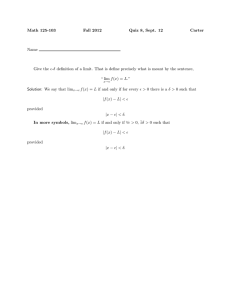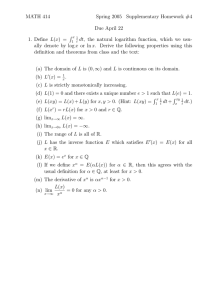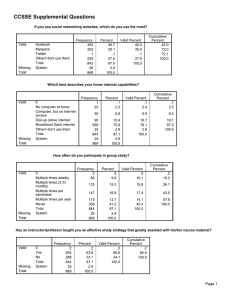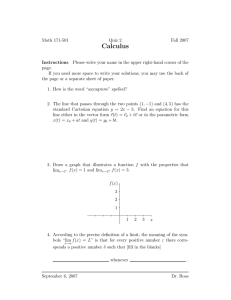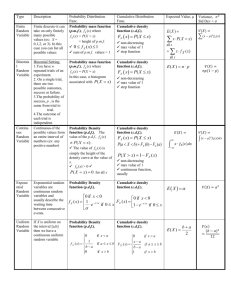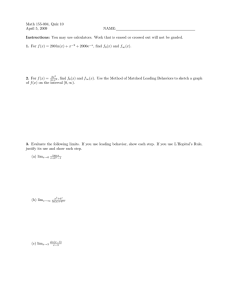12.2: Continuous random variables: Probability distribution functions
advertisement
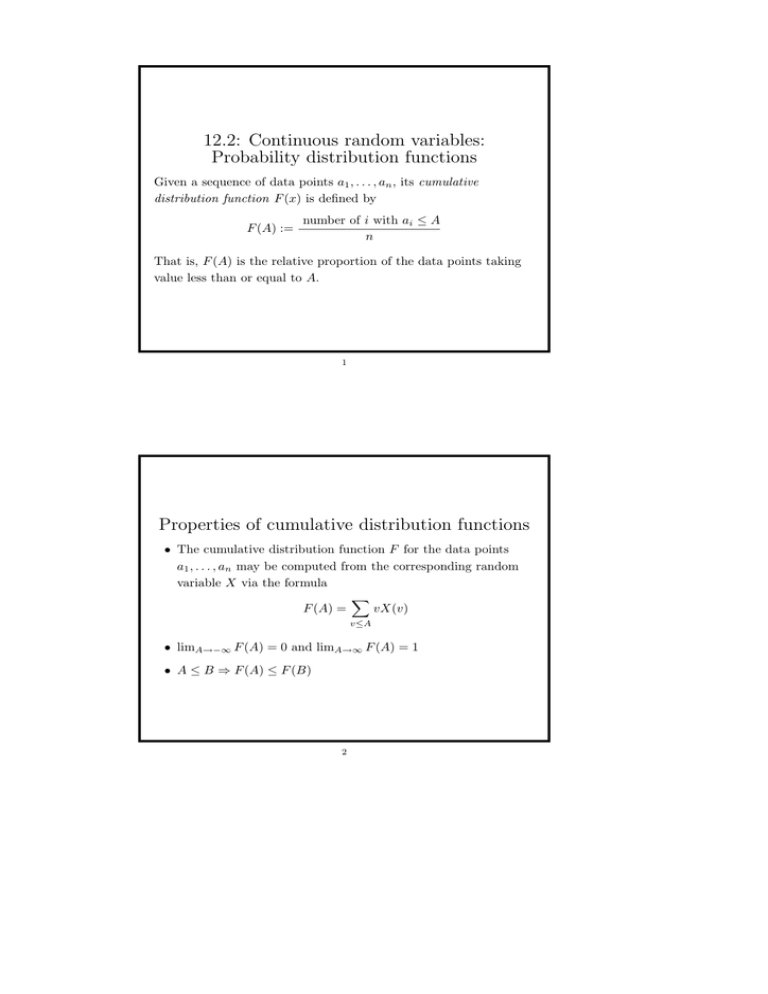
12.2: Continuous random variables: Probability distribution functions Given a sequence of data points a1 , . . . , an , its cumulative distribution function F (x) is defined by F (A) := number of i with ai ≤ A n That is, F (A) is the relative proportion of the data points taking value less than or equal to A. 1 Properties of cumulative distribution functions • The cumulative distribution function F for the data points a1 , . . . , an may be computed from the corresponding random variable X via the formula X F (A) = vX(v) v≤A • limA→−∞ F (A) = 0 and limA→∞ F (A) = 1 • A ≤ B ⇒ F (A) ≤ F (B) 2 Example Given the data points 5, 3, 6, 2, 5, 2, 1, −4, 0, 4, 9, 10, 3, 3, 6, 8, compute F (4) where F (x) is the corresponding cumulative distribution function. 3 Solution There are a total of sixteen data points of which nine have a value 9 less than or equal to four. Thus, F (4) = 16 . 4 Computing probabilities with cumulative distributions One may regard the cumulative distribution function F (x) as describing the probability that a randomly chosen data point will have value less than or equal to x. If X is the correponding random variable, one often writes Pr(X ≤ x) = F (x) From F we may compute other probabilities. For instance, the probability of obtaining a value greater than A but less than or equal to B is Pr(A < X ≤ B) = F (B) − F (A) 5 Continuous random variables We may wish to express the probability that a numerical value of a particular experiment lie with a certain range even though infinitely many such values are possible. • Express the probability that if a coin is flipped repeatedly, the first result of heads will occur by the nth flip. • What is the probability that a major earthquake will occur on the North Hayward fault within the next five years? • What is the probability that a randomly selected high school senior will score at least 600 on the SAT? 6 General cumulative distribution functions A cumulative distribution function (in general) is a function F (x) defined for all real numbers for which • A ≤ B ⇒ F (A) ≤ F (B) • limx→−∞ F (x) = 0 • limx→∞ F (x) = 1 We write X for the corresponding random variable and treat F as expressing F (A) = the probability that X ≤ A = Pr(X ≤ A). 7 Probability densities If the cumulative distribution function F (x) (for the random variable X) is differentiable and have derivative f (x) = F 0 (x), then we say that f (x) is the probability density function for X. For numbers A ≤ B we have Pr(A < X ≤ B) = F (B) − F (A) Z B = f (x)dx A 8 Properties of probability densities • 0 ≤ f (x) for all values of x since F is non-decreasing. RA • F (A) = −∞ f (x)dx • limx→−∞ f (x) = 0 = limx→∞ f (x) R∞ • −∞ f (x)dx = 1 Conversely, any function satisfying the above properties is a probability density. 9 Example The function f (x) e−x if x ≥ 0 = 0 if x < 0 is a probability density (for the random variable X). Compute Pr(−10 ≤ X ≤ 10). 10 Solution We know Z Pr(−10 ≤ X ≤ 10) 10 = f (x)dx −10 Z 0 = ( Z 0dx) + ( −10 0 = 0 + (−e−x |x=10 x=0 ) = 1 − e−10 11 10 e−x dx)

